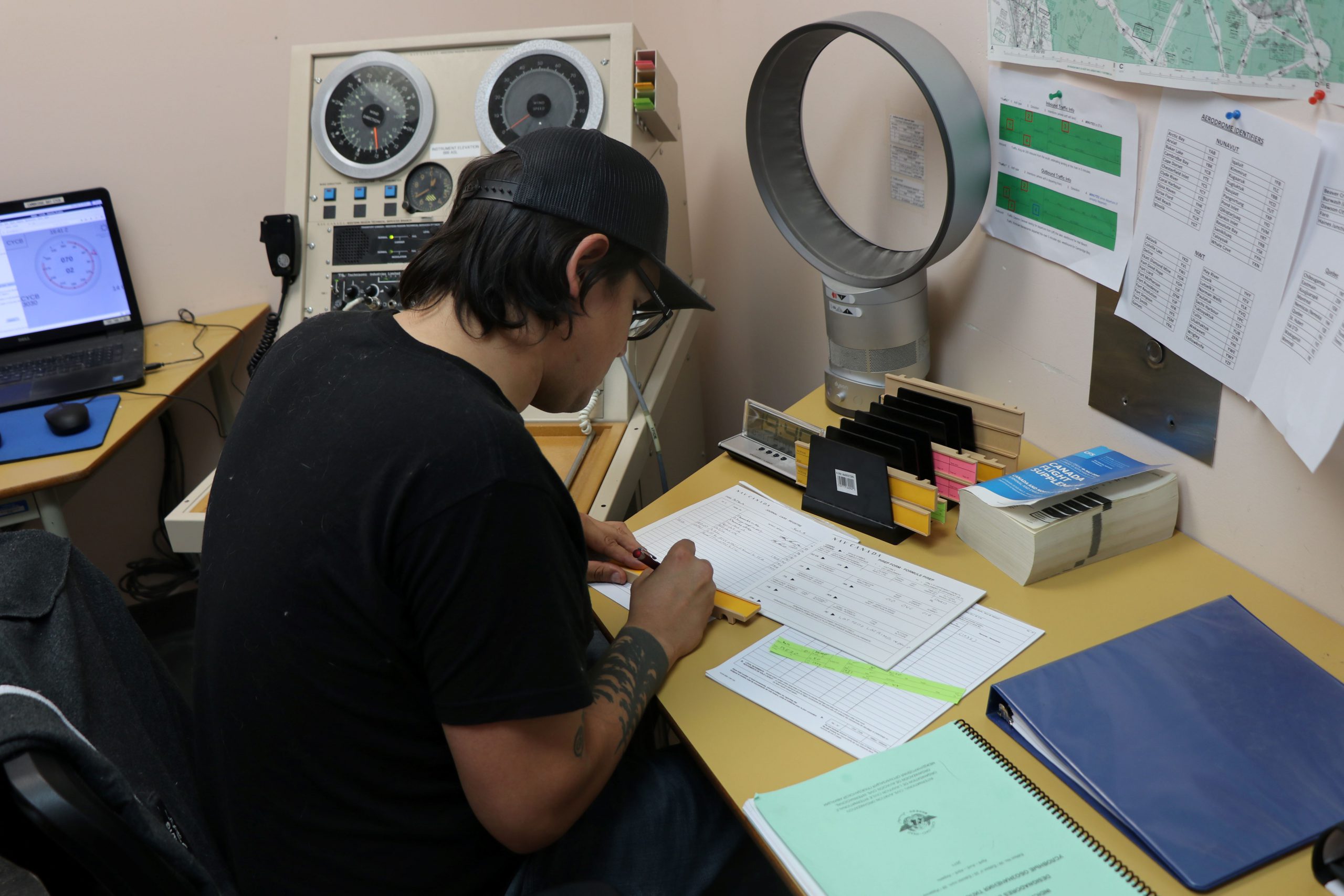Observer/Communicator
Observer Communicators help keep the world moving
Schools:
Location:
Program length: 9 Weeks
Start date: January 8 - March 14, 2025 / Synoptic Training: March 17 - March 21, 2025
Credential:
- Aurora College Certificate of Achievement
Delivery:
- Classroom
- Simulations

Program Description
This program is owned and developed by NAV Canada, operator of the Canada’s Air Navigation System. It is delivered by Aurora College.
The purpose of this program is to provide training relevant to the skills required to perform the duties of an Observer/Communicator. Training in the core program concentrates on radio simulations, radio communications and operating procedures, and weather observing and recording. Attendance is required at all scheduled classes. Students should be aware that homework will be assigned on a regular basis.
There are three required courses for program. Depending on operational requirements, students may be required to take an additional course.
Program Eligibility
Math 10-3 and Grade 10 English, or ALBE Math 140 and ALBE English 140 are admission requirements. Equivalencies will be considered on an individual basis. Applicants will normally be tested in order to evaluate their basic Math and English comprehension skills.
Applicant Assessment
Applicants are assessed by NAV Canada and applicable sponsoring agencies.
Program Admission
Candidates are recruited from the Northwest Territories, Nunavut, Yukon and Quebec. Candidates are recruited by the applicable program authorities.
Program Information
The Observer Communicator Program is a 48 in-class day program offered at Thebacha Campus that will prepare the student for On-The-Job certification at a Community Aerodrome Radio Station.
Curriculum requirements are set by NAV CANADA.
Approximately 50% of class time will be spent practicing the skills learned during classroom lectures, simulating the equipment and conditions of working at an airport. Successful completion of the program requires hard work, time management skills, excellent organizational skills, a positive attitude, and the ability to deal with stress. Program requirements include working outside during weather observations.
Program Objectives
The objective of the program is to train Observer/Communicators to work at Community Aerodrome Radio Stations. The graduates – as employers of their respective contractor, hamlet, territorial or provincial government – will perform aviation support duties on behalf of their employer.
The Observer/Communicator may be called upon to perform the following:
- Emergency Services;
- Air and Ground Communication Services;
- Weather Observing Services;
- Flight Planning Service;
- Communications Equipment and Navaids Services;
- Aerodrome Status Reporting Service; and,
- Administration Service.
Completion Requirements
Students must pass all three of the required courses in order to successfully complete the program and receive an “Aurora College Record of Achievement” document.
- The passing grade in course 211-001 is 75%
- The passing grade in course 211-002 is 75%
- The passing grade in course 211-003 is 75%
The passing grade in course 211-300 is 75% (If required by operation type, see Program Description/ Courses in Program)
Document of Recognition
Aurora College Certificate of Achievement
How to apply
Candidates are recruited from the Northwest Territories, Nunavut, Yukon and Quebec by Program Authorities.
For Recruitment information in the NWT and Nunavut, please contact ATS Services Limited:
- Toll-free: 888-845-4913
- Website: www.atsservices.ca
For Recruitment information in the Yukon please contact Community Airports Manager
Department of Highways & Public Works | Transportation Aviation Branch | W-14
Box 2129, Haines Junction, YT Y0B 1L0
P 867-634-2046 | C 867-323-2046 | F 867-667-8446
For Recruitment in Katavik, Quebec please contact Training Coordinator Transport
Kativik Regional Government
P.O Box 149, Kangirsuk, QC, J0M 1A0
P819-935-4822 | F 819-935-4902
